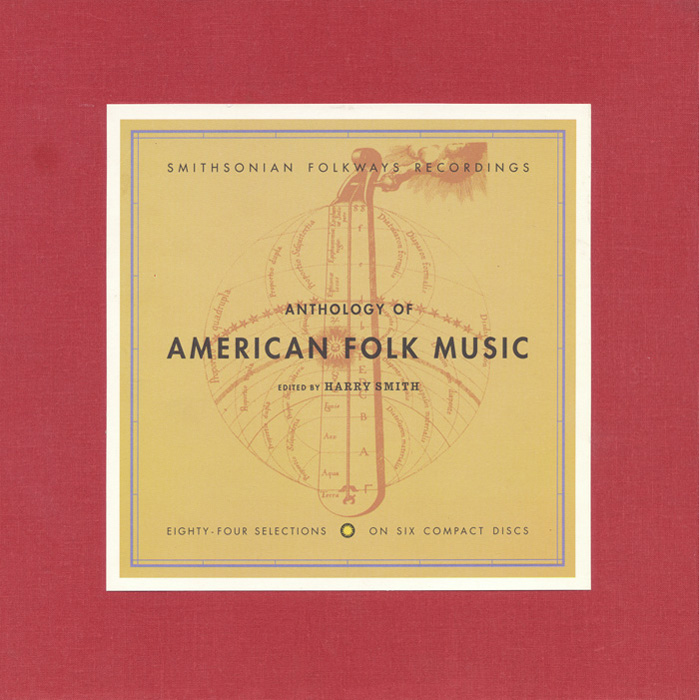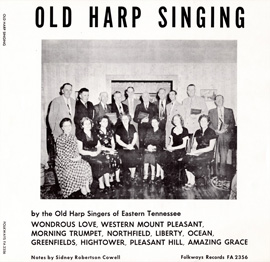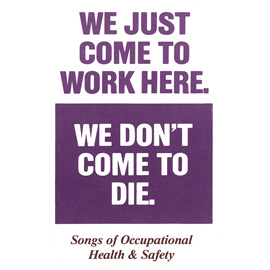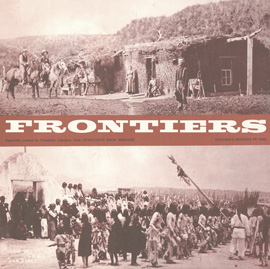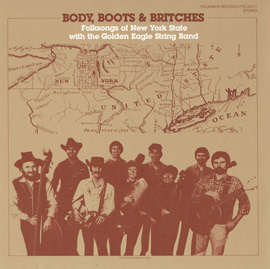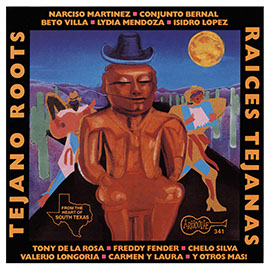Subjects:
- Music
- History

Contents:
The purpose of Smithsonian in Your Classroom is to help teachers bring to their students the educational power of museums and other community resources. It draws on the Smithsonian's exhibitions and programs—from art to zoology—to create classroom-ready materials for grades 3-8.
A Shape-Note Singing Lesson addresses the following standards:
National Standards for Arts Education (Music Content Standards)
- Singing alone and with others, a varied repertoire of music
- Reading and notating music
- Understanding relationships between music, the other arts, and disciplines outside the arts
- Understanding music in relation to history and culture
National Standard for History
- Regional folklore and culture contributions that helped to form our national heritage
Music education in eighteenth-century America was, in one respect, like music education today—there was precious little of it. New England, however, had the singing schools of itinerant teachers, some of whom were the first American composers. They wrote their own choral settings for sacred texts, music that was boldly melodic but often quite inconsistent with rules of harmony. "Nature is the best Dictator," declared the best known of them, William Billings of Boston, a sometime tanner and municipal stray-hog catcher. Nature gave way to European refinements in church music reforms early in the nineteenth century, but by then teachers had carried the work of Billings and the other "tunesmiths" to the western and southern frontiers. In the South, especially, this Yankee music took hold, as did the medium in which it arrived, shape notes.
The shape-note method of singing from written music first appeared in a book called The Easy Instructor, printed in 1801. It used four syllables for the seven notes of the scale and gave each syllable a distinctive note head: a triangle for fa, an oval for sol, a rectangle for la, and a diamond for mi. Before the Civil War, southern publishers sold hundreds of thousands of shapenote songbooks, the most enduring of which was The Sacred Harp, first printed in 1844. Revised editions are still used today in pockets of the South where "Sacred Harp singings" are an unbroken tradition, and by people across the country who have come to the tradition in the last couple of decades.
The new singers observe the practices of southern Sacred Harp groups. The four parts tenor, bass, alto, and treble—face each other to form a "hollow square." Each singer has a chance to "lead a lesson" by standing in the center of the square, selecting a song or set of songs, and beating the tempo with up-and-down strokes of the arm. The singings are sometimes all-day affairs, with a break for a big potluck meal called "dinner on the grounds."
The term "lesson" is a vestige of the singing schools. Some singings begin with an actual lesson, an introduction to the shapes and a first opportunity to join one's voice to the antique harmonies of the songs. We intend this issue of Smithsonian in Your Classroom as something like that. The appeal of the music cannot be fully understood without singing it, and learning to sing it is still as good a way as any to begin associating the sight of a note with its sound. If your students are able to follow the steps of the lesson plan—led by you or a music teacher at your school—they will be the latest inheritors of a long history that they will help keep alive.
There are dozens of shape-note recordings in print. Some of the earliest were made by Folkways Records, which the Smithsonian acquired in 1987. To supplement the issue, Smithsonian Folkways has put sound clips of three songs on a website.

A shape-note singing in the Shenandoah Valley of Virginia
Southern Accents
Sacred Harp songs were never accompanied by harps. The reference may have been to the harp of David, the psalmist, or to the human voice as an instrument. The singing is a cappella, and the emphasis seems always on the music produced by the singers. Each song is rehearsed by a singing of the syllables, which can be as passionate as the rendition of the text.
Most of the peculiar characteristics of the music date back to the New England composers. The melody is carried by the tenors rather than the upper voices, and the singers sometimes double the parts: a few tenors might join in on the highest line, but sing it an octave lower; sopranos might sing the tenor line an octave higher. William Billings prescribed this "conjunction of masculine and feminine voices" as a means of giving extra body to the sound.
But in the South the music became, in many ways, southern. By 1815, the shape-note locus had shifted to Virginia's Shenandoah Valley. The composers there favored a widely spaced harmony, with intervals of fourths and fifths rather than thirds, which one singer likens to "a picket fence with a few of the boards missing."
Some of the early southern works were based on tunes from the camp-meeting revivals that began in Kentucky and Tennessee around 1800. The revival movement was in reaction to nearly everything we associate with eighteenth-century rationalism, and the reaction was extreme. In her 1832 travel book Domestic Manners in America, Frances Trollope, mother of the English novelist Anthony Trollope, described a firelit camp meeting as Nathaniel Hawthorne might have described an assembly of the possessed.
"About a hundred persons came forward, uttering howlings and groans so terrible that I shall never cease to shudder when I recall them," she recalled with a shudder. "They appeared to drag each other forward, and on the word being given 'Let us pray,' they all fell on their knees; but this posture was soon changed for others that permitted greater scope for the movements of their limbs; and they were all soon lying on the ground in an indescribable confusion of heads and legs."
This new kind of worship, boiling up from the hearts of the people, was accompanied by the people's own music—familiar dance and ballad tunes turned into hymns. The shape-note standard "Wondrous Love," for instance, derived from the ballad "Captain Kidd." In the original, the pirate recounts his crimes and depredations:
I murdered William More
As I sailed, as I sailed.
The adaptation kept only the framework of melody and meter:
What wondrous love is this!
Oh, my soul! Oh, my soul!
The distribution of the songbooks followed the general movement of the Scots Irish—the Protestants of Northern Ireland—most of whom came first to southeastern Pennsylvania and then settled in the Appalachians. In Sacred Harp singing there are still Celtic traces: tones held like the drone of a bagpipe; leaps between the notes of gapped scales, but with the lilt or the burr flattened into a twang.
After the Civil War, the books passed into the hands of African Americans, who made the music equally their own. As folk music collector Alan Lomax wrote about southern music in general, the isolation of the South fostered the "growth of two separate, hybrid traditions, which were similar enough to permit a back-and-forth movement of songs, but sufficiently different to keep this exchange a stimulating one."
The first collection of African American compositions was The Colored Sacred Harp, published in 1934 by Judge Jackson, a farmer and businessman in the wiregrass country of southeastern Alabama. The works are basically in keeping with the New England models, but the parts are sometimes arranged into a call and response, a form brought from Africa, and the singers take great liberties in embellishing the notes, as in older spirituals and newer gospel music.
The frontispiece of William Billings's 1770 songbook The New-England Psalm-singer was engraved by another revolutionary figure, Paul Revere.

The frontispiece of William Billings's 1770 songbook The New-England Psalm-singer was engraved by another revolutionary figure, Paul Revere.
Traditions and Conventions
Sacred Harp singing is a very deliberate tradition. Groups meet at a set time once a month,or as often as once a week, and attend annual regional singing conventions, where they observe business like rules of order. A chair presides, calling each member up to lead, and a secretary records the selections of songs. Just before the break for the meal, there is a "memorial lesson,"a time to honor singers who are ill or have died since the last gathering.
Like a constitution, these formalities preservea democratic idea. As seen in the inward-facing arrangement of the vocal parts, the gatherings are not performances. They are meant forthe singers themselves, and no one is excluded from joining in. At their most generous, the best singers will say that another's lack of talent does not diminish the experience.
"I'd go a thousand miles to sing thismusic," said a veteran from northern Georgia.
"I wouldn't cross the street to hear it."
Most groups adhere to one of two twentieth-century versions of the 1844 book. The B. F.White Sacred Harp, also known as the Cooperrevision, has a wide distribution in the lowland South, from Texas to northern Florida. The Sacred Harp, also known as the Denson revision,has a smaller traditional territory—the upland northern parts of Georgia, Alabama, and Mississippi—and is a some what more traditional book. New editions include new compositions,but the publishers have held firm against modern harmonies.
Another shape-note bastion is mountainous eastern Tennessee,where "Old Harp" groups singfrom The New Harp of Columbia,first published in 1867 in Nashville.In this book there are seven shapes for the syllables do, re, mi, fa, sol,la, si. Seven-shape singers regardthe four-shape method—the repetition of syllables and shapes within an octave—as too complicated rather than too simple. As a Tennessee singingschool teacher put it, "What man gives two of his boys the same name?"
Four-shape singers beg to differ. "It's easier for the same reason that English is easier tolearn than Chinese," said one. "There are fewer symbols."
A big difference in the sound of the music has to do with tempo, but this varies among thefour-shape groups as well. Musicologists have compared the fastest-singing Sacred Harpers to Bulgarian folk choirs, while less expert listener shave been put in mind of chainsaws revving up. Old Harp and slow Sacred Harp groups seem to take a more solemn approach to the songs. Such matters of style are not in the notation; they are habits that formed as early as the nineteenth century.
The Wiregrass Sacred Harp Singers during the recording of a 1993 New World Records album, The Colored Sacred Harp

The Wiregrass Sacred Harp Singers during the recording of a 1993 New World Records album, The Colored Sacred Harp
Singing from Memory
In the piney low country of southeastern Georgia, fifty miles back from the hotels and golf courses on the booming coast, there is a Cooperbook group made up mostly of an extended family named Lee. The singings have been going on so long that none of the Lees can say for sure when they started, and they are a people whose history is always close at hand.
"I live within a mile of my great-greatgrandfather's farm," said David Lee, a John Deere dealer from the town of Hoboken. "He lived across the creek. I can see the yard lights there on certain nights." The group is the only one in that part of the state, and until recently they knew of only one time when there was contact with other singers. In the 1960s, one of Mr. Lee's uncles went to a Denson-book singing in northern Alabama and brought back a tape recording. The rapid-fire sound was almost unrecognizable to the slow-singing Lees. They continued to think of their own tradition as something singular in all the world, and in some ways it is.
Instead of taking turns leading songs every few minutes, they elect one member to "lead throughout his useful life." Mr. Lee has led for nearly a decade, and he carries on a practice found nowhere else: he "walks time," stepping around the square to the tempo of the song. He has a theory that this was an idiosyncrasy of the first singing-school teacher in the area. Because the family belongs to a Primitive Baptist church and observes its prohibitions, he feels some explanation is needed.
"It's always a forward motion, so that's why we say it's not dancing," he said. "It's just walking funny."
In 1994, a singer in Florida found the Lees on the mailing list of the publishers of The B. F. White Sacred Harp, and invited them to a convention in Tallahassee. The invitation was surprise enough—they couldn't have known there was such a thing as a Sacred Harp convention. When they arrived, they felt like a lost tribe returning. They met people from all over the country who, however differently they sang, were "similar to us in their hearts." Mr. Lee has since traveled to singings in Seattle, Minneapolis, Chicago, Washington, D.C., and Hanover, New Hampshire. Northern singers have made Hoboken, Georgia, a pilgrimage site.
Some in the town have stopped singing because of changes the visitors have brought, but many more have been attracted to Sacred Harp by the outside attention. In the 1970s, the group was down to a core of fifty members. Big annual meetings now draw as many as five hundred people, about half of them locals.
"I would submit that there were differences from daddy's time to great-granddaddy's time," said Mr. Lee. "A living tradition changes. If it stopped changing, it would be because it died."

David Lee of Hoboken, Georgia
Two Kinds of Change
The seven-shape tradition, an evolution from the four shapes, is evolving still. Throughout the South, there are seven-shape "new book" conventions at which groups sing thoroughly modern gospel songs with the accompaniment of instruments. Some numbers feature quartets and solos. Just about all that remains of the old
music is the shape notation.
But it's the archaic Denson Sacred Harp that has become the most popular book nationwide. It's the one used at urban singings, where there might be foccacia bread and San Pellegrino water at the dinner on the grounds, alongside chicken and dumplings and buttermilk pie made from recipes on a shape-note Web page. Its success is due in large part to the work of Hugh McGraw, chairman of the nonprofit publishing company, who has taught singing schools and organized conventions in twentythree states. New singers will say, though, that it would have been their preference anyway—the oldest tunes are exactly what attracted them.
"This is living history," said Stephen McMaster of Richmond, Virginia. "When we sing the Stephen Jenks song 'Mount Vernon,' we're singing a funeral dirge written for George Washington. It's all right there before you, and it's astonishing. You realize why we won the Revolution when you listen to Billings. It's such gutsy music."
Mr. McMaster, who grew up in Connecticut, first heard the work of Billings at a choral concert at Old Sturbridge Village in Massachusetts. He liked it so much he went looking for sheet music, but found nothing until he came upon a copy of The Sacred Harp. He was studying music at the University of Richmond when he attended his first singings, which struck a chord in him in more ways than one.
"The southern music is like nothing else," he said. "It ends on open fifths—this wild sound—and somewhere in the back of your head, through all this noise that's pouring out of you, you hear the missing third, because of harmonic
vibrations. It just fills in on its own."

The Wiregrass Sacred Harp Singers at Union Grove Baptist Church, Ozark, Alabama
Parting Hand
And then there are the words. These wild tunes, unsubdued by dynamic markings and sung at full throttle, carry the poetry of great English hymnists like Isaac Watts, John Newton, and Charles Wesley. Some of it trips happily along in verse schemes that are musical without the music:
How painfully pleasing the fond recollection Of youthful connection and innocent joy.
Some of it offers a comfort that is only commiserative, like an old-time country song:
How tedious and tasteless the hours
When Jesus no longer I see;
Sweet prospects, sweet birds, and sweet flow'rs
Have lost all their sweetness to me.
The best of it is as fine as anything in the language:
'Twas grace that taught my heart to fear,
And grace my fears relieved.
Any resemblance to country music is probably not coincidental. The Carter Family, the Louvin Brothers, and a number of other early artists got their training from singing-school teachers. The Victor Company's historic first recordings of "hillbilly" music, made in 1927 in Bristol, Tennessee, included a quartet singing from a shape-note book.
David Winship, education director of Bristol's Birthplace of Country Music Alliance Museum, introduces students to poetry through country lyrics. His work is made easier by all the metaphors and similes, in which he sees glimmers of the psalmic language of eighteenth—and nineteenth-century hymns.
"With a traditional country tune like 'Mountain Railway,' common human experience is shown symbolically," he said. "'Life is like a mountain railway / With an engineer that's brave, / You must make the run successful / From the cradle to the grave.'"
An understanding of that song does not depend on a familiarity with steep grades and perilous trestles; a deeper understanding of Sacred Harp texts, apparently, does not depend on sect or even faith. At an urban singing, one is likely to meet mainline and fundamentalist Protestants, Catholics, Jews, and a good many who would call themselves nonbelievers. A Unitarian singer in Washington, D.C., said that she feels something spiritual in the act of harmonizing on songs that are "uniquely meaningful to each person."
If one earthly theme runs through The Sacred Harp, it is the joy of fellowship so keen that there is always an awareness of its obverse, the heartache of separation. The closing tune at conventions, "Parting Hand," sums it up:
Ye mournful souls, lift up your eyes
To glorious mansions in the skies;
O trust his grace—in Canaan's land
We'll no more take the parting hand.
"When there are five hundred of you," said David Lee, "chances are good that you'll lose somebody every year. It's difficult for me to find words to say how much I love somebody. I can say that through the music: Because I love you so much, I'm really going to be hurt if you're not there."
In "Parting Hand," this Canaan, this land of no parting, is imagined as a place where "we'll shout and sing with one accord." The imagination doesn't have to reach far. It seems very much like a Sacred Harp singing.

The Carter Family: Maybelle, A.P., and Sara
Lesson Plan
Keeping the Spirit Alive
by Leanne Wiberg
I was working on a geological field project in central Texas, mapping the ups and downs of a suspected impact crater, when I stumbled upon my first Sacred Harp singing. Walking along a high limestone ridge, I heard a faint sound, a kind of wail, coming from the river valley below. It was a little spooky. I headed down the slope and followed it to what my topographical map told me was a church. The building, baked bare of all paint, looked more like a disused barn.
Singers of all ages were gathered at a picnic shelter out back, seated at tables arranged in a square. I watched and listened, entranced by the strange harmonies and the zeal of the participants. A man I recognized as the deputy sheriff was standing in the middle of the square, leading the song.
When it ended he called for a break, and the singers got up and rearranged the tables into a long serving buffet. From out of baskets, coolers, and newspaper wrappers came fried chicken and home-grown tomatoes, casseroles and cornbread, peanut butter pie and double chocolate cake. I hung back, but I did take the liberty of picking up one of the songbooks that had been set aside. The shape of the book itself was peculiar— oblong, wider than tall. When I opened it, I saw shape notation for the first time, but before I could give it much study a farmer invited me to get a plate and help myself. Most of the people there, he said, already knew about me. They had seen me off in the hills doing my "rock thang."
My research had a double impact. The geological map I made helped prove that the high ridge was the central uplift of an impact structure structure. More important to me personally, I became a shape-note singer and joined a nationwide community. Whenever I go into the field or travel in general, I check to see if there will be a local singing or a convention nearby. I've always felt as welcome as an old friend, and so will you if you are able to expand this lesson by taking the class to a singing. There are Sacred Harp groups in nearly every state. A listing is online at www.mcsr.olemiss.edu
Objectives:
Students learn the four shapes used in Sacred Harp singing and "sing the shapes" of "Yankee Doodle." In a key appropriate to their voices, they sing the melody part of "Chester," a Revolutionary- era tune by William Billings. If they are old enough and able to do so, they try a two-part version, melody and harmony.
The lesson assumes that the students have learned the values of whole, half, quarter, and eighth notes, together with dotted-note values.
Material:
- Photocopies of pages 11 and 12 for all students
- Poster board or chalkboard showing the mnemonics on page 11
- Optional aid: a pitch pipe or musical instrument for setting the pitch


Activity:
- Ask students if they've seen The Sound of Music. Point out that in the movie the children sing each musical pitch as a syllable (do, re, mi, fa, sol, la, ti, do). Write the pitches on the board, and then lead the class in singing them, perhaps in the form of the "do, a deer" song.
- Tell them of the system that uses only four syllables for the seven-note scale and has a different note shape for each syllable. Direct their attention to the poster board or chalkboard on which you have drawn the four shapes with mnemonics. Ask them to pronounce the note names.
- Lead them in a very slow singing of a major scale using the shapes. Start by singing fa at any medium-range, comfortable pitch, and then move up the scale with sol, la, fa, sol, la, mi, fa. Try singing back down: fa, mi, la, sol, fa, la, sol, fa.
- Sing the scale again in a different key. Explain that one of the advantages of the shapenote system is that you can sing without regard to the key signature. Once the pitch is set, you need only pay attention to the intervals, represented by the shapes.
- Sing the shapes of "Yankee Doodle": fa, fa, sol, la, fa, la, sol, etc. Tell students that at Sacred Harp singings each song is rehearsed this way. The familiarity of "Yankee Doodle" may be a help in the exercise, but shape-singing takes some getting used to. The first few times, the whole enterprise will no doubt collapse into a jumble of fa's and la's.
- Ask students to sit around you to form a square no larger than twelve feet on each side. They should all face inward. Explain that people sit this way at a singing in order to direct the sound toward one central point. This might also be a good time to mention that Sacred Harp music is usually sung in full voice. Encourage them to sing as loudly as they like without yelling or trying to drown out other singers.
- Call their attention to the two-line version of "Chester" (page 12). Tell them that you are going to sing the shapes of the melody, or "lead," as it is called in Sacred Harp singing. Ask them to find the first line marked "lead" and to follow the rise and fall of the notes as you sing. The class should sing the melody at least twice before you move to the next step.
- Slowly recite the first verse of "Chester," and have the students repeat after you line by line. (It might be helpful to clap out the rhythm of each line.) Sing the verse once, and then have them join you in a singing of it.
- Tell them that Sacred Harp singers keep the tempo with an up-and-down motion of the forearm, which is illustrated by the photos on page 13. Although "Chester" is in 4/4 time, it is usually sung at a fairly good clip, and the effect is two beats to the measure. The downstroke of the arm comes on the measure's first beat; the upstroke is on the third beat. Ask students to imitate your motions as they again sing the song. You might try both verses this time.
- If time and student abilities allow, introduce the harmony (top line) of "Chester." Sing this part through, and then have the whole class rehearse it several times. Allow interested students to take turns keeping the tempo, or "leading," in the center of the square.
- Designate two adjacent sides of the square as the harmony (treble) section and the other two sides as the melody (lead) section. Before the class tries to sing both parts together, you might offer this encouragement: perfect harmony is rarely achieved in Sacred Harp singings; indeed, it is not even a goal. Newcomers find that they stay on their part more consistently than they would if they felt more pressure.


Young singers leading a group in Washington, D.C.
Composers of Billings's time often gave a title to the tune only, without reference to the words. Many of the titles simply memorialize a place, so that the index of The Sacred Harp, a book of the Deep South, is full of New England town names—"Greenwich," "Concord," "Fairfield," "Worcester." The best-known song in the shapenote canon, "Amazing Grace," is called "New Britain" in The Sacred Harp.
The "L.M." after the title "Chester" is a designation of the text's poetic structure. It stands for "long meter," stanzas of four lines in iambic tetrameter. An iamb is a set of two syllables with the accent on the second one. Each line of "Chester" has eight syllables and four iambs: da dum, da dum, da dum, da dum. The tune can accommodate any poem in this meter.
Billings himself wrote a poem that gave "Chester" another incarnation as a patriotic song, which was to some Revolutionary troops what "The Battle Hymn of the Republic" was to the Union Army in the Civil War. You might try leading the class on one of its stanzas:
Let tyrants shake their iron rod And Slav'ry clank her galling chains; We fear them not, we trust in God, New England's God forever reigns.
Howe and Burgoyne and Clinton, too, With Prescott and Cornwallis join'd, Together plot our Overthrow, In one infernal league combined.
The foe comes on with haughty Stride, Our troops advance with martial noise; Their Vet'rans flee before our Youth,
And Gen'rals yield to beardless Boys.
Better yet, students might try writing their own lyrics—a school song, perhaps. "Chester" will still be "Chester."
Leanne Wiberg is an educator in northern Virginia. She developed this lesson plan with Ella Wilcox of MENC—The National Association for Music Education. The graphics are by Miriam A. Kilmer, Rising Dove Fine Arts and Services.
Resources
WEB SITES
There are two comprehensive shape-note sites:
Sacred Harp Singing
www.mcsr.olemiss.edu/~mudws/harp.html
Fasola Home Page
www.fasola.org
SONGBOOKS
The B. F. White Sacred Harp, Revised Cooper Edition. Samson, Ala.: Sacred Harp Book Company, 1992. The Sacred Harp, 1991 Edition. Bremen, Ga.: Sacred Harp Publishing Company.
SCHOLARLY BOOKS
Bealle, John. Public Worship, Private Faith: Sacred Harp and American Folksong. Athens: University of Georgia Press, 1997. Cobb, Buell E., Jr. The Sacred Harp: A Tradition and Its Music. Athens: University of Georgia Press, 1989.
SMITHSONIAN FOLKWAYS RECORDINGS
The Grammy-winning Anthology of American Folk Music (order # 40090) includes three Sacred Harp songs. Newsweek called this six-disk set "the secret history of rock and roll."
The two-disk FASOLA: 53 Shape-Note Folk Hymns (order # 4151) is a 1970 recording of a Mississippi Sacred Harp group.
The one-disk Old Harp Singers: Hymns, Anthems, Fuging Tunes from Tennessee (order # 2356) is a 1951 recording of a seven-shape group.
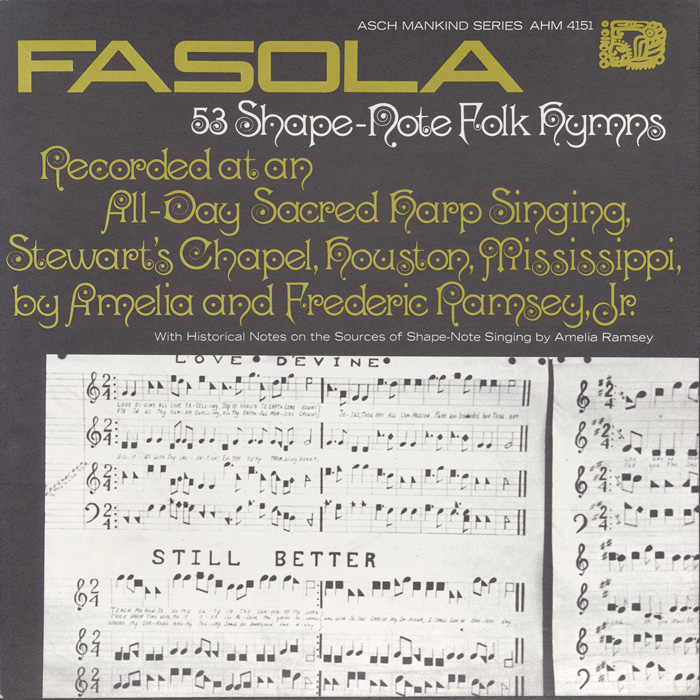
“Liverpool”
from Fasola: Fifty-three Shape Note Folk Hymns: All Day Sacred Harp Singing at Stewart's Chapel in Houston, Mississippi (1970) | FW04151

“Western Mount Pleasant (No. 206)”
from Old Harp Singing (1951) | FW02356
To order, call 800-410-9815. For a free Folkways catalog, call 202-287-3251.
Acknowledgments
Howard Bass
National Museum of American History
Hugh McGraw Sacred Harp Publishing Company
Bremen, Georgia
Anthony Seeger
Smithsonian Folkways Recordings
Atesh Sonneborn
Smithsonian Folkways Recordings
Ella Wilcox MENC—The National Association for
Music Education
David Winship Birthplace of Country Music Alliance
Bristol, Tennessee
CREDITS
Stephen Binns
Writer
Michelle Smith
Publications Director
Kathleen Sims Designer












